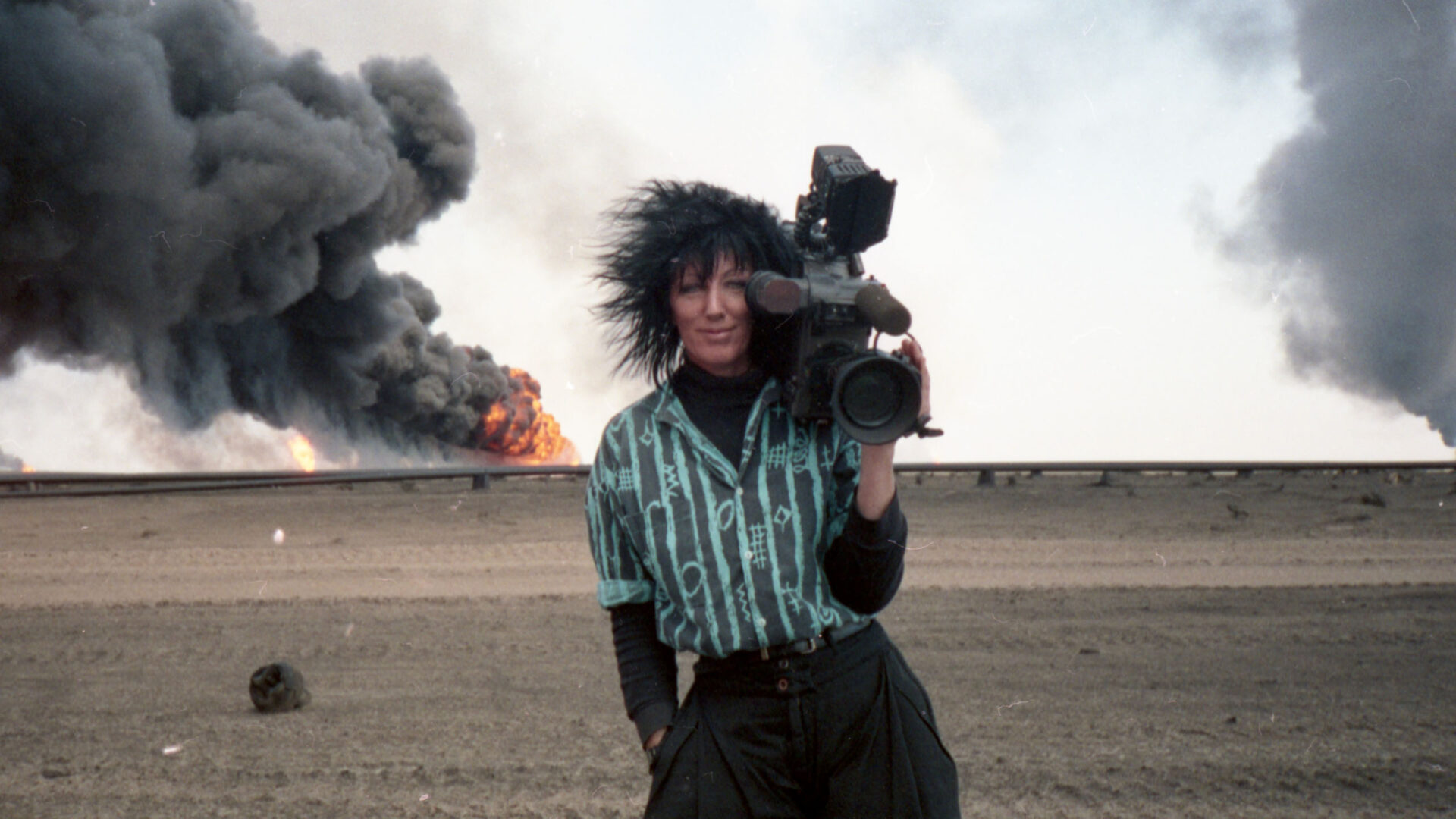Actress Lucy Lawless makes her directorial debut with “Never Look Away,” a documentary which chronicles the career of Margaret Moth, a camerawoman from New Zealand who worked at CNN starting in 1990 and made invaluable contributions to news coverage of war.
It’s easy to see why Lawless was drawn to Moth as a subject. Moth was fearless, as demonstrated many times in the anecdotes shared by her family, co-workers, and ex-lovers, and by the footage of her moving forward during battles while others are falling behind to safety, for example. Her camera often appears like another appendage as she documents troubled areas such as Kuwait (covering Operation Desert Storm), Sarajevo, and Baghdad. It’s clear to see the passion she had for her career.
She was also considered mysterious, outrageous, and fun, the person you’d hang out with who always had the best stories and craziest adventures. But she was also very private, and as seen in the documentary, a little troubled (that she started dating one of the men interviewed when he was 17 and she was 30 is…not great).
The opening credits set the tone, as Heart’s “Barracuda” plays over footage of Moth filming during war and running from bombings. The correspondents she worked with then, including former CNN correspondent Stefano Kotsonis and current CNN chief international anchor Christiane Amanpour, speak highly of both her work ethic and her personally. There are also interviews with Moth’s sisters and brother, two of her ex-lovers, Jeff Russi (who passed away in December 2023) and Yaschinka, and her best friend, Joe Duran, a former CNN cameraman, as well as several others whose lives she touched.
Born Margaret Wilson, the blonde, blue-eyed Moth changed her last name and styled herself like a goth rebel, all black clothes, black hair, black eyeliner, and combat boots. According to her siblings, Jan, Shirley, and Ross, they never knew if their dad would come home drunk or if their mother would be violent. Moth eventually moved away and lived life to the fullest, we’re told, partying with friends and co-workers alike, and never being afraid to go to somewhere like Rwanda to cover the genocide occurring there, or to Sarajevo during the Bosnian War, where she was shot by a sniper and disfigured.
Where some might call it a career after a traumatic injury like the one Moth suffered—her jaw was shattered, her teeth and tongue maimed—Moth endured surgery after surgery to get back to what she did best, photojournalism.
At a post-film Q&A session at the Sundance Film Festival, Lawless explained that Duran asked her to make the film about Moth’s life and work. She also explained that it was difficult to get actual footage Moth recorded for CNN because a lot of her work was shot on Betamax and has long been taped over. Also, as Lawless noted, camerapersons didn’t exactly get credits as anchors do.
While Lawless captures the deep affection and admiration Moth’s former co-workers had and still have for her, Moth herself remains a bit of a mystery by the end of the film’s brisk 85 minutes. Because Lawless relies more on talking head interviews with those who knew Moth and less on footage of existing interviews with Moth—who died in 2010 of cancer—she remains enigmatic, someone who, as Russi notes, would cry for hours without anyone knowing why, but then turn around and entertain her compatriots as they hunkered down in bombed-out buildings, waiting to capture that next important shot.
The more successful aspect of the documentary, though, seems to be how Moth’s work affected the world’s view of the wars she covered. Moth would not waver in capturing the realities of what she witnessed even with guns pointed directly at her. Lawless noted in the Q&A that she chose to use the documentary’s sound and score to make the audience feel even more uncomfortable with the images of people trying to survive as bombs go off and bullets fly. That’s a choice that definitely pays off.
By far the best footage involves the dioramas created by WETA for the film, including the one used to show “Sniper Alley,” the place in Sarajevo where Moth was hit during a sniper attack in 1992. The sets are eerie, conveying the terror one must have felt driving through the area and knowing shots could hit at any moment (but shouldn’t have because Moth and crew were in a van clearly marked as TV/press).
There’s a lot to admire in Lawless’ debut as a director. Despite not getting as full a picture of Moth as might have been possible with more footage of her speaking in her own words, “Never Look Away” does make an impact in the way it frames war photojournalism and the larger truths of our world, especially in light of current events. It’s possible that alone would have pleased Moth quite a bit.

